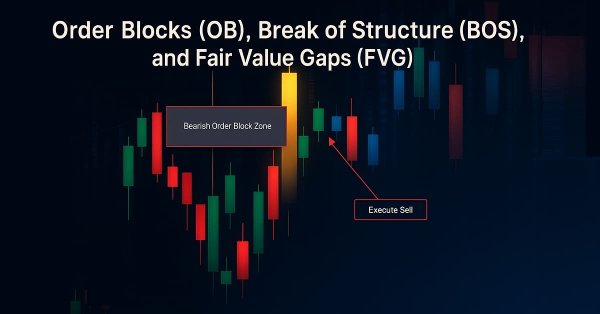
Library for easy and quick development of MetaTrader programs (part XIV): Symbol object
In this article, we will create the class of a symbol object that is to be the basic object for creating the symbol collection. The class will allow us to obtain data on the necessary symbols for their further analysis and comparison.


Bi-Directional Trading and Hedging of Positions in MetaTrader 5 Using the HedgeTerminal Panel, Part 1
This article describes a new approach to hedging of positions and draws the line in the debates between users of MetaTrader 4 and MetaTrader 5 about this matter. The algorithms making such hedging reliable are described in layman's terms and illustrated with simple charts and diagrams. This article is dedicated to the new panel HedgeTerminal, which is essentially a fully featured trading terminal within MetaTrader 5. Using HedgeTerminal and the virtualization of the trade it offers, positions can be managed in the way similar to MetaTrader 4.


Cross-Platform Expert Advisor: Signals
This article discusses the CSignal and CSignals classes which will be used in cross-platform expert advisors. It examines the differences between MQL4 and MQL5 on how particular data needed for evaluation of trade signals are accessed to ensure that the code written will be compatible with both compilers.

SQL and MQL5: Working with SQLite Database
This article is intended for developers who would be interested in using SQL in their projects. It explains the functionality and advantages of SQLite. The article does not require special knowledge of SQLite functions, yet minimum understanding of SQL would be beneficial.


Graphical Interfaces I: Form for Controls (Chapter 2)
In this article we will create the first and main element of the graphical interface - a form for controls. Multiple controls can be attached to this form anywhere and in any combination.


Cross-Platform Expert Advisor: Time Filters
This article discusses the implementation of various methods of time filtering a cross-platform expert advisor. The time filter classes are responsible for checking whether or not a given time falls under a certain time configuration setting.


Error Handling and Logging in MQL5
This article focuses on general issues linked to handling software errors. Furthermore, the logging term is brought up and the examples of logging implementation with MQL5 tools are shown.

Machine learning in Grid and Martingale trading systems. Would you bet on it?
This article describes the machine learning technique applied to grid and martingale trading. Surprisingly, this approach has little to no coverage in the global network. After reading the article, you will be able to create your own trading bots.

Color optimization of trading strategies
In this article we will perform an experiment: we will color optimization results. The color is determined by three parameters: the levels of red, green and blue (RGB). There are other color coding methods, which also use three parameters. Thus, three testing parameters can be converted to one color, which visually represents the values. Read this article to find out if such a representation can be useful.


Applying Monte Carlo method in reinforcement learning
In the article, we will apply Reinforcement learning to develop self-learning Expert Advisors. In the previous article, we considered the Random Decision Forest algorithm and wrote a simple self-learning EA based on Reinforcement learning. The main advantages of such an approach (trading algorithm development simplicity and high "training" speed) were outlined. Reinforcement learning (RL) is easily incorporated into any trading EA and speeds up its optimization.

Custom Walk Forward optimization in MetaTrader 5
The article deals with the approaches enabling accurate simulation of walk forward optimization using the built-in tester and auxiliary libraries implemented in MQL.


Improving Panels: Adding transparency, changing background color and inheriting from CAppDialog/CWndClient
In this article, we continue studying the use of CAppDialog. Now we will learn how to set color for the background, borders and header of the dialog box. Also, this article provides a step-by-step description of how to add transparency for an application window when dragging it within the chart. We will consider how to create child classes of CAppDialog or CWndClient and analyze new specifics of working with controls. Finally, we will review new Projects from a new perspective.


Developing a cross-platform grid EA (Last part): Diversification as a way to increase profitability
In previous articles within this series, we tried various methods for creating a more or less profitable grid Expert Advisor. Now we will try to increase the EA profitability through diversification. Our ultimate goal is to reach 100% profit per year with the maximum balance drawdown no more than 20%.


How to copy signals using an EA by your rules?
When you subscribe to signals, such situation may occur: your trade account has a leverage of 1:100, the provider has a leverage of 1:500 and trades using the minimal lot, and your trade balances are virtually equal — but the copy ratio will comprise only 10% to 15%. This article describes how to increase the copy rate in such cases.

How to master Machine Learning
Check out this selection of useful materials which can assist traders in improving their algorithmic trading knowledge. The era of simple algorithms is passing, and it is becoming harder to succeed without the use of Machine Learning techniques and Neural Networks.

Learn how to trade the Fair Value Gap (FVG)/Imbalances step-by-step: A Smart Money concept approach
A step-by-step guide to creating and implementing an automated trading algorithm in MQL5 based on the Fair Value Gap (FVG) trading strategy. A detailed tutorial on creating an expert advisor that can be useful for both beginners and experienced traders.


Graphical Interfaces III: Simple and Multi-Functional Buttons (Chapter 1)
Let us consider the button control. We will discuss examples of several classes for creating a simple button, buttons with extended functionality (icon button and split button) and interconnected buttons (button groups and radio button). Added to that, we will introduce some additions to existing classes for controls to broaden their capability.


The NRTR indicator and trading modules based on NRTR for the MQL5 Wizard
In this article we are going to analyze the NRTR indicator and create a trading system based on this indicator. We are going to develop a module of trading signals that can be used in creating strategies based on a combination of NRTR with additional trend confirmation indicators.


Multiple Regression Analysis. Strategy Generator and Tester in One
The article gives a description of ways of use of the multiple regression analysis for development of trading systems. It demonstrates the use of the regression analysis for strategy search automation. A regression equation generated and integrated in an EA without requiring high proficiency in programming is given as an example.


Using indicators for optimizing Expert Advisors in real time
Efficiency of any trading robot depends on the correct selection of its parameters (optimization). However, parameters that are considered optimal for one time interval may not retain their effectiveness in another period of trading history. Besides, EAs showing profit during tests turn out to be loss-making in real time. The issue of continuous optimization comes to the fore here. When facing plenty of routine work, humans always look for ways to automate it. In this article, I propose a non-standard approach to solving this issue.


Mini Market Emulator or Manual Strategy Tester
Mini Market Emulator is an indicator designed for partial emulation of work in the terminal. Presumably, it can be used to test "manual" strategies of market analysis and trading.

Custom symbols: Practical basics
The article is devoted to the programmatic generation of custom symbols which are used to demonstrate some popular methods for displaying quotes. It describes a suggested variant of minimally invasive adaptation of Expert Advisors for trading a real symbol from a derived custom symbol chart. MQL source codes are attached to this article.


Parsing HTML with curl
The article provides the description of a simple HTML code parsing library using third-party components. In particular, it covers the possibilities of accessing data which cannot be retrieved using GET and POST requests. We will select a website with not too large pages and will try to obtain interesting data from this site.


Use MQL5.community channels and group chats
The MQL5.com website brings together traders from all over the world. Users publish articles, share free codes, sell products in the Market, perform Freelance orders and copy trading signals. You can communicate with them on the Forum, in trader chats and in MetaTrader channels.

Creating an EA that works automatically (Part 01): Concepts and structures
Today we'll see how to create an Expert Advisor that simply and safely works in automatic mode.


Gap - a profitable strategy or 50/50?
The article dwells on gaps — significant differences between a close price of a previous timeframe and an open price of the next one, as well as on forecasting a daily bar direction. Applying the GetOpenFileName function by the system DLL is considered as well.


Practical application of neural networks in trading
In this article, we will consider the main aspects of integration of neural networks and the trading terminal, with the purpose of creating a fully featured trading robot.


Manual charting and trading toolkit (Part I). Preparation: structure description and helper class
This is the first article in a series, in which I am going to describe a toolkit which enables manual application of chart graphics by utilizing keyboard shortcuts. It is very convenient: you press one key and a trendline appears, you press another key — this will create a Fibonacci fan with the necessary parameters. It will also be possible to switch timeframes, to rearrange layers or to delete all objects from the chart.


MQL5 Wizard: Placing Orders, Stop-Losses and Take Profits on Calculated Prices. Standard Library Extension
This article describes the MQL5 Standard Library extension, which allows to create Expert Advisors, place orders, Stop Losses and Take Profits using the MQL5 Wizard by the prices received from included modules. This approach does not apply any additional restrictions on the number of modules and does not cause conflicts in their joint work.

Elevate Your Trading With Smart Money Concepts (SMC): OB, BOS, and FVG
Elevate your trading with Smart Money Concepts (SMC) by combining Order Blocks (OB), Break of Structure (BOS), and Fair Value Gaps (FVG) into one powerful EA. Choose automatic strategy execution or focus on any individual SMC concept for flexible and precise trading.


Multicurrency monitoring of trading signals (Part 2): Implementation of the visual part of the application
In the previous article, we created the application framework, which we will use as the basis for all further work. In this part, we will proceed with the development: we will create the visual part of the application and will configure basic interaction of interface elements.

Timeseries in DoEasy library (part 38): Timeseries collection - real-time updates and accessing data from the program
The article considers real-time update of timeseries data and sending messages about the "New bar" event to the control program chart from all timeseries of all symbols for the ability to handle these events in custom programs. The "New tick" class is used to determine the need to update timeseries for the non-current chart symbol and periods.

The power of ZigZag (part I). Developing the base class of the indicator
Many researchers do not pay enough attention to determining the price behavior. At the same time, complex methods are used, which very often are simply “black boxes”, such as machine learning or neural networks. The most important question arising in that case is what data to submit for training a particular model.

Continuous Walk-Forward Optimization (Part 7): Binding Auto Optimizer's logical part with graphics and controlling graphics from the program
This article describes the connection of the graphical part of the auto optimizer program with its logical part. It considers the optimization launch process, from a button click to task redirection to the optimization manager.

How to Make Money from MetaTrader AppStore and Trading Signals Services If You Are Not a Seller or a Provider
It is possible to start making money on MQL5.com right now without having to be a seller of Market applications or a profitable signals provider. Select the products you like and post links to them on various web resources. Attract potential customers and the profit is yours!


Creating an Expert Advisor, which Trades on a Number of Instruments
The concept of diversification of assets on financial markets is quiet old, and has always attracted beginner traders. In this article, the author proposes a maximally simple approach to a construction of a multi-currency Expert Advisor, for an initial introduction to this direction of trading strategies.


Selection and navigation utility in MQL5 and MQL4: Adding data to charts
In this article, we will continue expanding the functionality of the utility. This time, we will add the ability to display data that simplifies our trading. In particular, we are going to add High and Low prices of the previous day, round levels, High and Low prices of the year, session start time, etc.

Trading DiNapoli levels
The article considers one of the variants for Expert Advisor practical realization to trade DiNapoli levels using MQL5 standard tools. Its performance is tested and conclusions are made.


How to analyze the trades of the Signal selected in the chart
The trade Signals service develops in leaps and bounds. Trusting our funds to a signal provider, we would like to minimize the risk of losing our deposit. So how to puzzle out in this forest of trade signals? How to find the one that would produce profits? This paper proposes to create a tool for visually analyzing the history of trades on trade signals in a symbol chart.


Patterns available when trading currency baskets. Part II
We continue our discussion of the patterns traders can come across while trading currency baskets. In this part, we will consider the patterns formed when using combined trend indicators. Indicators based on a currency index are to be used as the analytical tool.